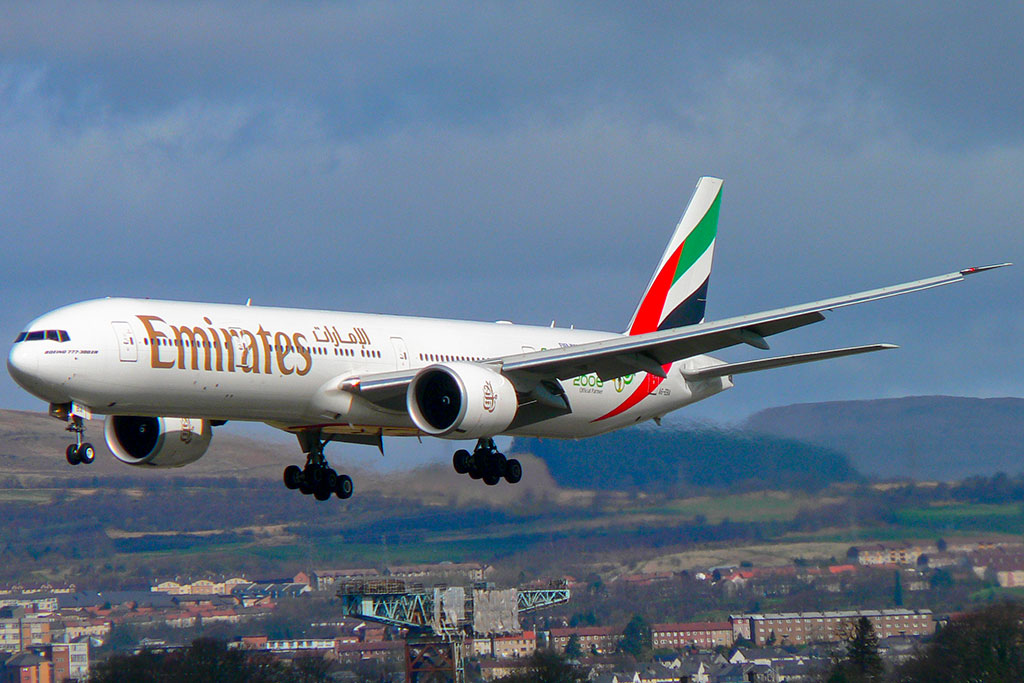Emirates is one of the world’s largest and most respected airlines. Yet it is a relatively newcomer to the world’s major airlines having been founded in the 1980s.
Its fleet of widebody airliners can be seen in the familiar UAE flag livery all over the world. Nigel Richardson looks at its history, present-day operations, and its current aircraft fleet.
History of Emirates Airline
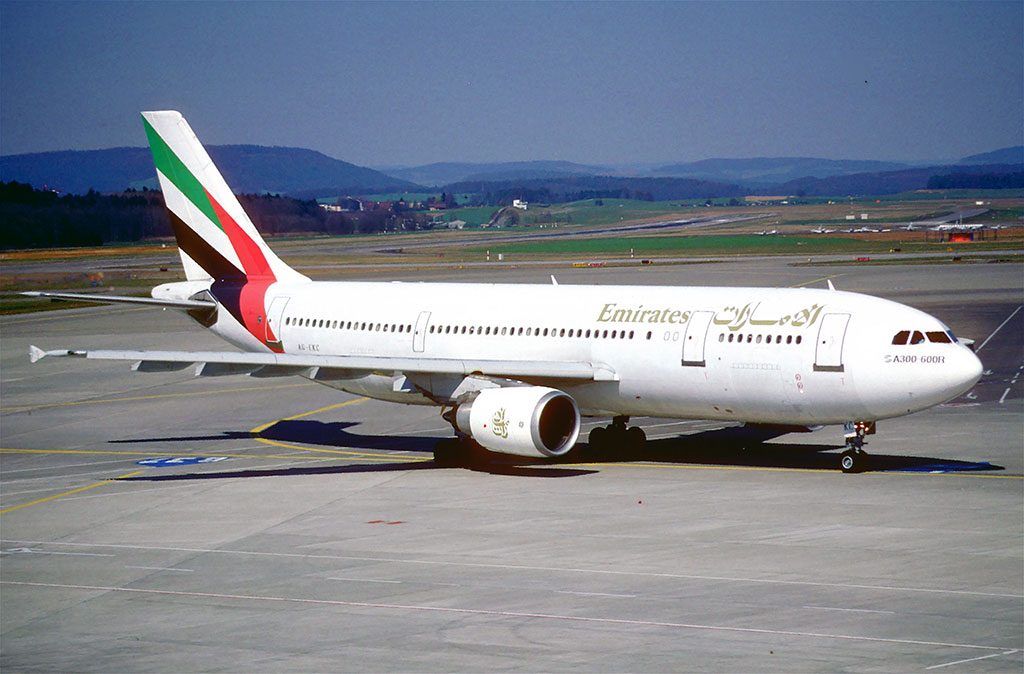
Airbus A300B4-605R; A6-EKC was the second A300 to be acquired by Emirates following delivery in May 1989. It was operated by the carrier for just over 10 years. (Aero Icarus from Zürich, Switzerland, licensed under CC BY-SA 2.0)
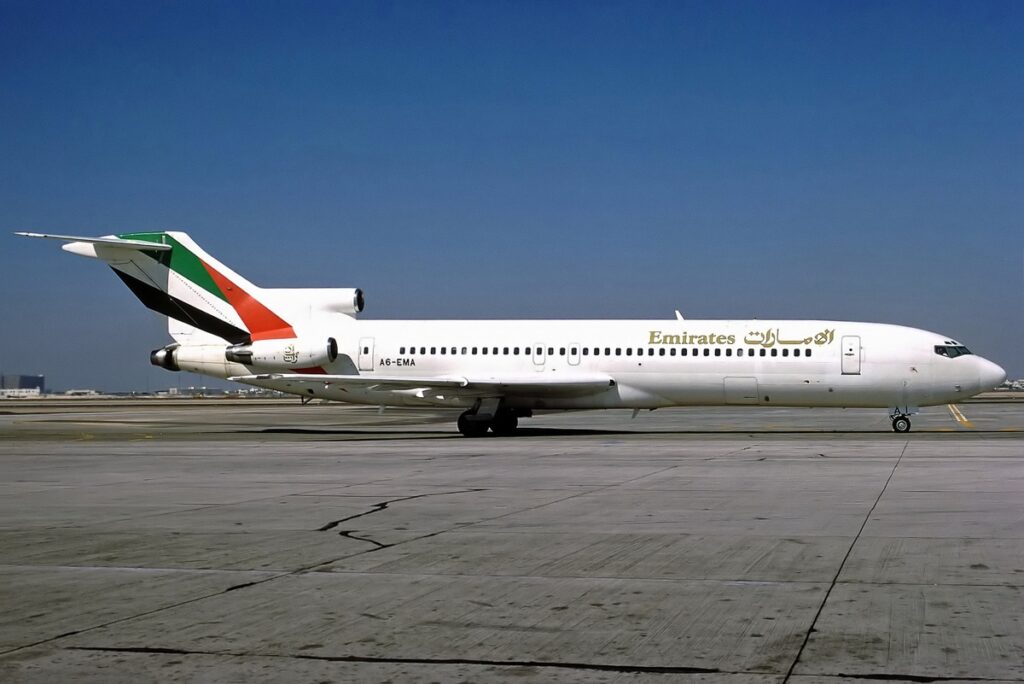
Boeing 727-200 A6-EMA was one of the first aircraft to be acquired by Emirates in 1985. (Perry Hoppe, licensed under GFDL 1.2)
Emirates Airline was founded in March 1985, in response to Gulf Air reducing its services to Dubai due to concerns that it was only providing feeder flights for other long-haul carriers. Mike Flanagan, previously of BOAC, Gulf Air and British Airways, was appointed as Chief Executive and, under the chairmanship of Sheikh Ahmed bin Saeed Al Maktoum, was tasked with setting up the airline, with start-up funding of US$10 million from the Dubai Royal Family.
Pakistan International Airways wet-leased a new Boeing 737-300 and an Airbus A300B4-200 to the new airline, and provided initial technical and administrative support. Two Boeing 727-200s were also supplied from the Dubai Royal Air Wing. Emirates’ first flights were from Dubai to Karachi and Mumbai on 25 October 1985 and during its first year, the airline transported 260,000 passengers and 10,000 tons of freight.
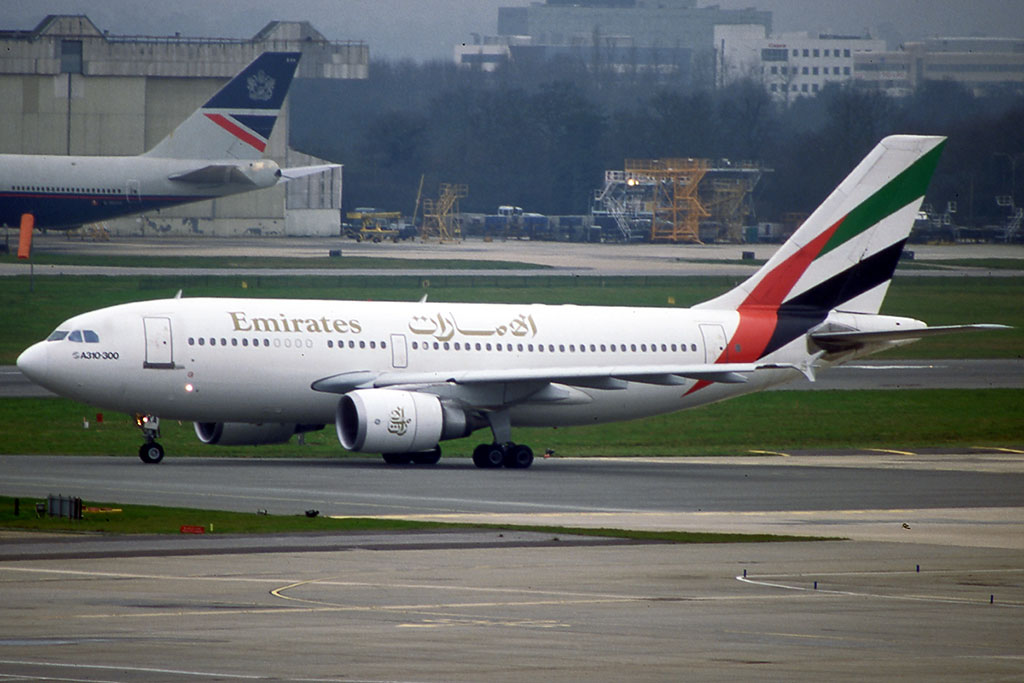
Airbus A310-300 A6-EKA, Emirates’ first fully-owned aircraft. (Rosedale7175 from Norwich, UK, licensed under CC BY-SA 2.0)
Colombo, Dhaka, Amman and Cairo were added to the route network in 1986 followed by European destinations, including Frankfurt and London Gatwick, the following year. Emirates took delivery of its first fully-owned aircraft in July 1987, an Airbus A310-300 (A6-EKA), and obtained a third Boeing 727-200 in 1989.
Expansion into the Far East market in 1989 included flights to Bangkok, Manila and Singapore, with Hong Kong added in 1991. Emirates began services to London Heathrow in June 1991, operating three weekly flights using an Airbus A310-300.
In the early 1990s, Emirates was one of the world’s fastest growing airlines, with 1.6 million passengers and 68,000 tons of cargo carried in 1993, generating an annual revenue of around US$500 million. The airline had moved into a new US$2 million departure terminal at Dubai International Airport and, in 1992, placed an order for seven Boeing 777s (1 x 777-200 and 6 x 777-200ERs).
By 1995 the carrier’s fleet had expanded through the addition of six Airbus A300s and eight Airbus A310s. The first Boeing 777-200 was delivered in June 1996 and by the end of the decade the 777 fleet had grown to eleven aircraft. The introduction of the Boeing 777 allowed Emirates to begin flights to Melbourne (via Singapore), a route which would become very profitable and eventually led to the addition of more destinations in Australia.
In 1998 Emirates acquired a 40% financial share in Air Lanka (for US$70 million), since renamed SriLankan Airlines, and in the same year Emirates Sky Cargo was officially launched, with delivery of its first aircraft, a single Boeing 747-200 freighter leased from Atlas Air, prior to which it had been using the cargo holds of Emirates passenger aircraft since 1985.
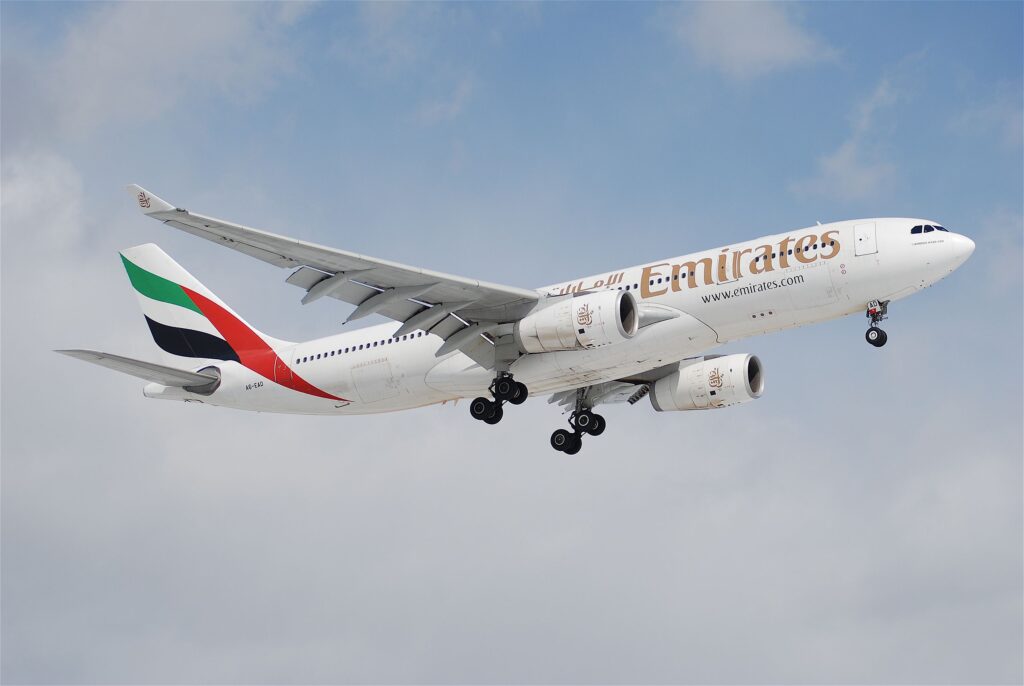
Emirates Airbus A330-243 A6-EAD on final approach to Zurich Airport in March 2008. (Aero Icarus from Zürich, Switzerland, licensed under CC BY-SA 2.0)
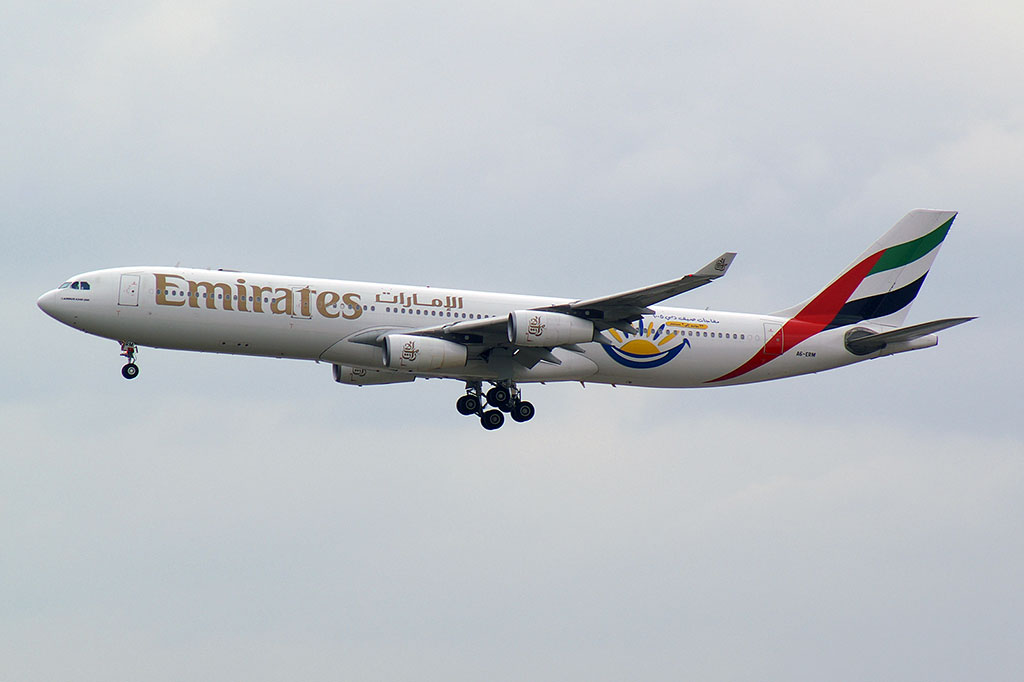
Airbus A340-313 A6-ERM. Emirates operated eight Airbus A340-300s, taking delivery of all eight aircraft in the first five months of 2004. (Kambui, licensed under CC BY 2.0)
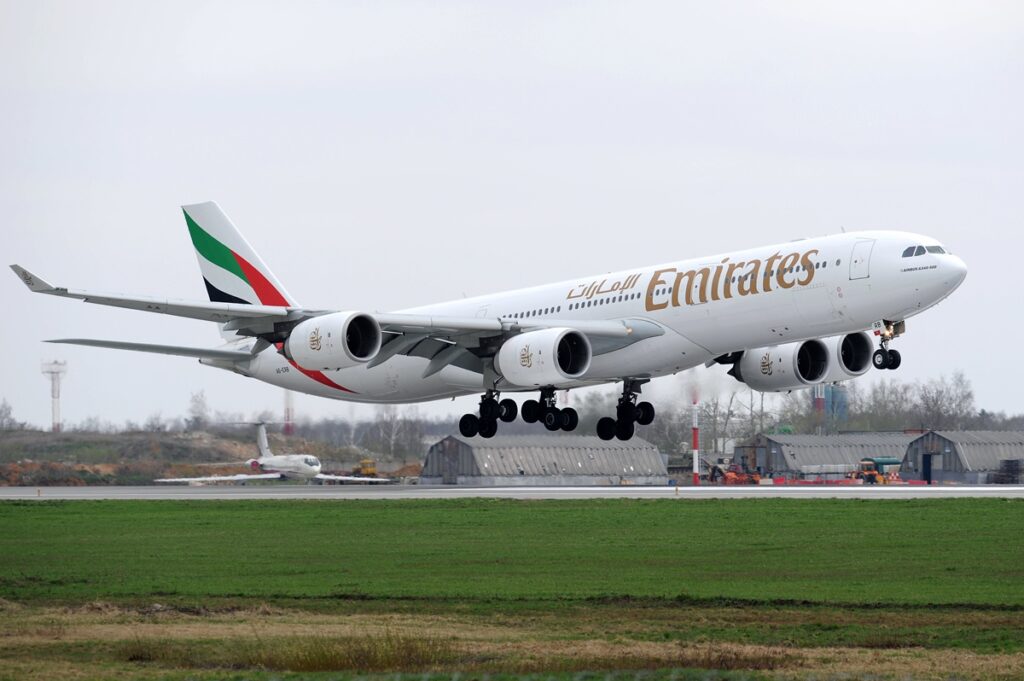
The first Airbus A340-500 to be acquired by Emirates was A6-ERB seen here. When Emirates received the aircraft in October 2003 it became the first carrier to operate the ultra-long-range airliner. (Toshi Aoki, licensed under CC BY-SA 3.0)
Fleet expansion continued in 1999 with the delivery of five Rolls-Royce Trent-powered Airbus A330-200s and the following year Emirates placed orders for twenty-five Boeing 777-300s, eight Airbus A340-500s, three Airbus A330-200s and seven Airbus A380s, the first order by an airline for the super jumbo.
The 2001-02 financial year was problematic for Emirates with bookings severely affected by an economic recession, the bombing of Colombo airport and the September 11 terrorist attacks in New York. However, recovery was soon on the horizon and at the Paris Air Show in 2003, orders were placed for a further twenty-one A380s, twenty-six Boeing 777-300ERs, two Airbus A340-500s and eighteen A340-600s (the A340-600 order was cancelled in 2007). An order for forty-two Boeing 777s in 2005, in a deal worth US$9.7 billion, was the largest ever Boeing 777 order at the time.
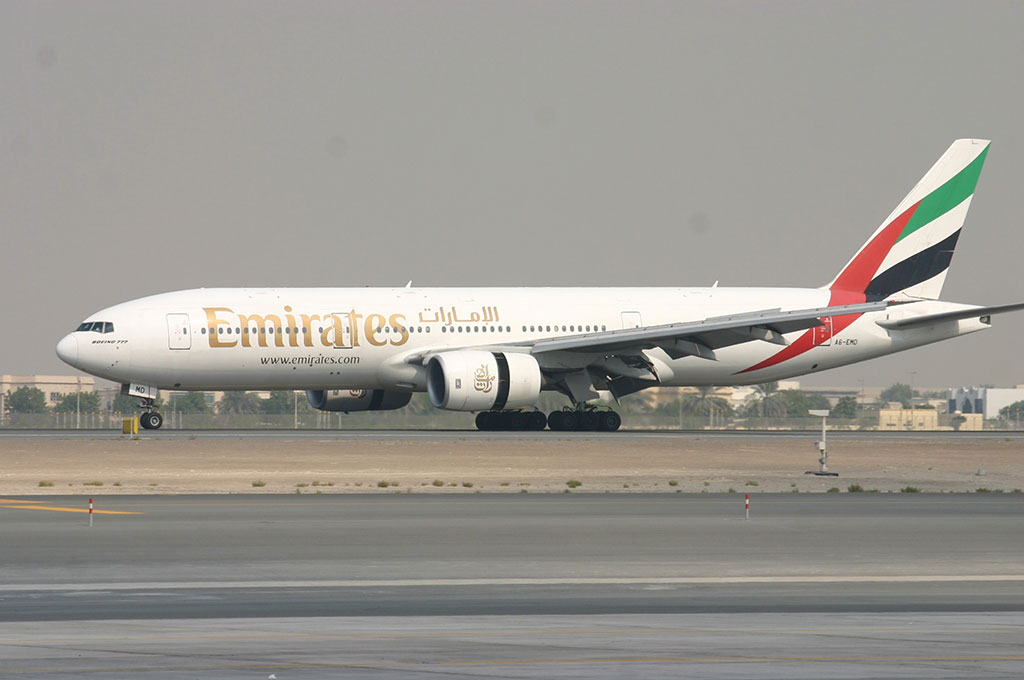
The first Boeing 777 to be delivered to Emirates in June 1996 was 777-200 A6-EMD. (aeroprints.com, licensed under CC BY-SA 3.0)
The development of Emirates’ route network had seen it capture traffic from South Asia to North America, with a transit stop at Dubai International Airport instead of the previously used hubs of London, Paris and Frankfurt involving British Airways, Air France and Lufthansa.
Plans for further fleet expansion were announced at the 2007 Dubai Air Show with orders worth over US$34.9 billion placed for seventy Airbus A350s (later cancelled in 2014), eleven A380s and twelve Boeing 777-300ERs. In the same year, Emirates began operating the first non-stop flight between the Middle East and South America.
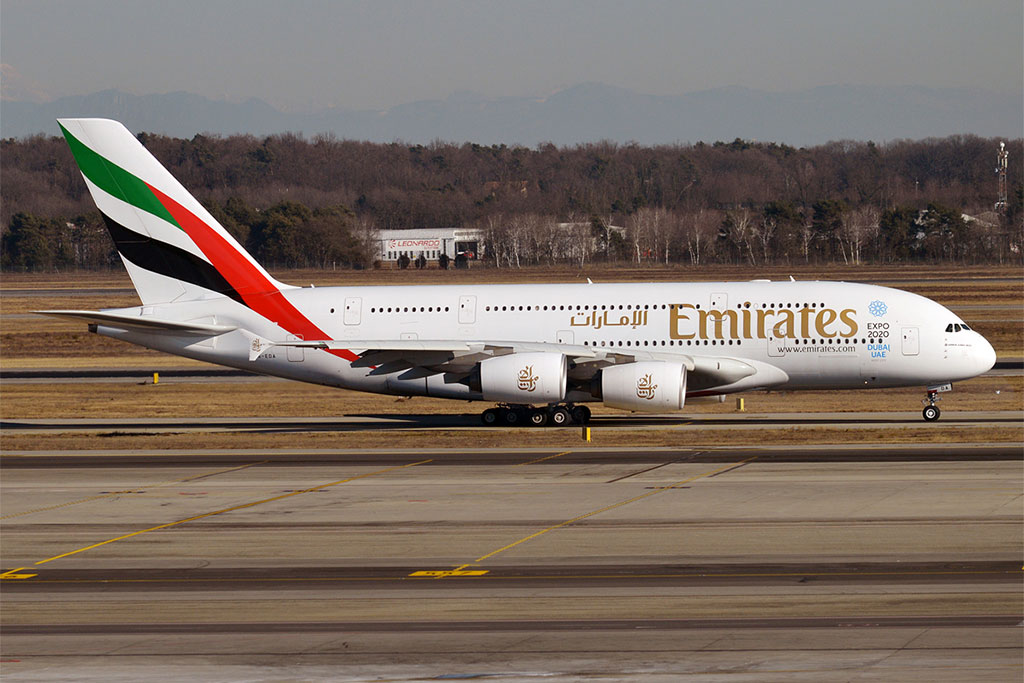
The first Airbus A380, A6-EDA, to be delivered to Emirates in July 2008. (Anna Zvereva from Tallinn, Estonia, licensed under CC BY-SA 2.0)
In July 2008, Emirates took delivery of its first Airbus A380 (A6-EDA) and it entered into service with the carrier on the Dubai-New York route at the beginning of August. Further orders for 32 and 50 A380s were placed in 2010 and 2013 respectively.
Delivery of its 78th Boeing 777 in 2009 made Emirates the world’s largest operator of the type. An additional thirty 777s were ordered in 2010 at the Farnborough Air Show, followed by fifty more in 2011. The carrier also showed commitment to the next generation of the wide-body, twin-engine airliner, still in development, by placing an order for 150 Boeing 777X aircraft (consisting of 35 777-8s and 115 777-9s) in 2014, with the objective of the 777X gradually replacing its current 777 fleet and becoming the new flagship aircraft after the A380. By December 2019 this order had been progressively reduced to 115 due to delays in the development and certification of the aircraft.
In November 2017, Emirates agreed an order for 40 Boeing 787-10s but in 2019 changed it to 30 787-9s, a deal which was also linked with the reduction in 777X orders. Forty A330-900s and thirty A350-900s (increased to fifty by the end of 2019) were ordered in February 2019 but at the same time Emirates’ outstanding order of fifty-three A380s was reduced to fourteen, following a review of the carrier’s operations and the development of more efficient aircraft and engine technologies. During the 2018/19 financial year, Emirates carried the largest number of passengers ever in its history – 58.6 million.
Emirates received its 123rd and final A380 in December 2021. For Airbus it marked the end of A380 production. Four A380s were retired by Emirates in February/March 2020.
Emirates Today
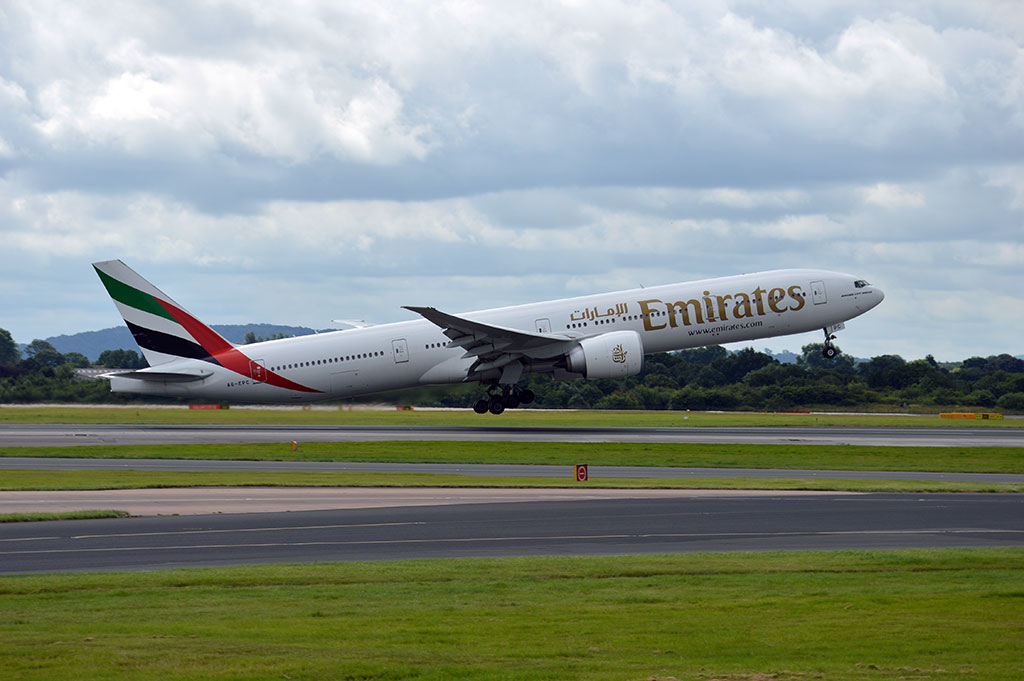
Boeing 777-36NER A6-EBY was delivered to Emirates in March 2007 and is currently active (Nigel Richardson)
Today Emirates is one of the world’s largest airlines. During the 2022-23 financial year it carried over 43.6 million passengers, operating to 62 cities across its network. The year was highlighted by a post-COVID 81% increase in revenue to US$29.3 billion and an annual profit of US$2.9 billion (US$1.1 billion in 2021-22).
The airline currently operates a fleet of 263 aircraft including 144 Boeing 777s and 119 Airbus A380s and has almost 200 aircraft on order including:
- 50 Airbus A350-900s (expected to begin delivery in 2024)
- 30 Boeing 787-9s (expected from 2025)
- 115 Boeing 777Xs (expected from 2025)
Current Emirates Fleet

Emirates’ Boeing 777s parked at Dubai International Airport. (Konstantin von Wedelstaedt, licensed under GFDL 1.2)
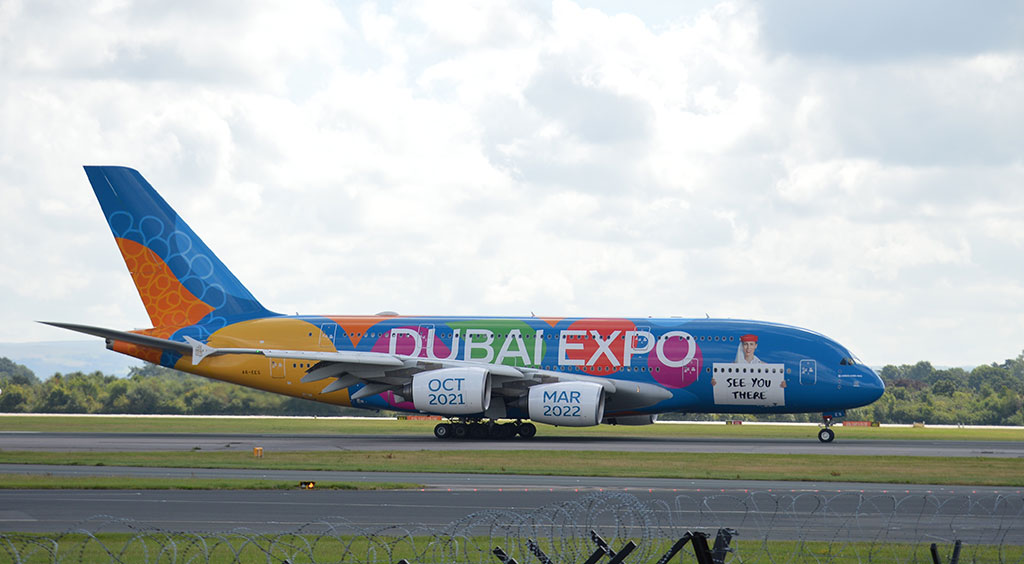
Airbus A380 A6-EES in the colourful Dubai Expo special livery (Nigel Richardson)
At the time of writing, the Emirates aircraft fleet comprises the following:
Boeing 777: 144 (including 5 parked/undergoing maintenance)
Airbus A380: 119 (including 31 parked/undergoing maintenance)
| Boeing 777-21HLR (10) | A6-EWA – EWJ |
| Boeing 777-300ER (2) | A6-EQO; A6-EQP |
| Boeing 777-31HER (113) | A6-EBK; A6-EBM; A6-EBR; A6-EBU; A6-ECE – ECK; A6-ECQ – ECZ; A6-EGA – EGZ; A6-ENA – ENZ; A6-EPA – EPZ; A6-EQA – EQN |
| Boeing 777-36NER (8) | A6-EBQ; A6-EBW; A6-EBY; A6-ECA; A6-ECC; A6-ECD; A6-ECM; A6-ECO |
| Boeing 777-FIH (Cargo) (9) | A6-EFH – EFO; A6-EFS |
| Boeing 777-F (Cargo) (2) | A6-EFT; A6-EFU |
| Airbus A380-861 (86) | A6-EDC; A6-EDE; A6-EDG – EDZ; A6-EEA – EEZ; A6-EOA – EOZ; A6-EUA – EUL |
| Airbus A380-842 (33) | A6-EUM – EUZ; A6-EVA – EVS |
Data from planespotters.net (as of 17/10/2023)

